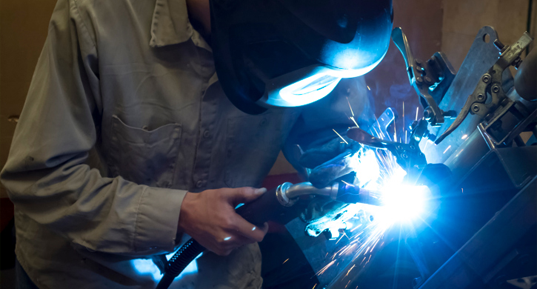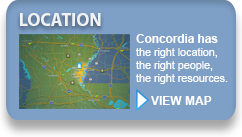Push for Area “Work Ready” certification to begin soon
Jul 20, 2015
~~The Miss-Lou’s economic development leaders will start this month a tour of business and civic organizations in an effort to ask the area’s employers and workforce to take an honest assessment of them.
Concordia Parish and Adam’s County received late last year a $73,000 grant for workforce assessment that will ultimately certify the area’s workforce as “work ready”.
The three target groups for worker assessment and certification are currently employed, the transitioning workforce- the unemployed and the underemployment- and emerging workers, which are typically high school and college graduates just entering the job market.
“When this is done, it is going to have a domino effect, “said Ruth Nichols, the associate vice president for the community and educational partnerships at Alcorn State University. “It will tell us where we are with the workforce, and it will give us something to work up from.”
So how exactly does a community become certified as work ready?
At the center of the certification is a three-pronged test by American Council on Testing, the same organizations that’s publishes the familiar ACT assessment taken by high school students for college admissions. The test---knows as Work Keys--- has two reading components and a math portion.
“This isn’t like high school math, “Nichols said. “It’s math in business situations.”
While the test sounds a lot like school, its metrics don’t measure specific abilities.
“It doesn’t necessarily say what skills you have, but it says what you are capable of based on that assessment, “Concordia Parish Economic Development Executive Director Heather Malone said.
For those looking for work, it can also be beneficial because it creates a profile for them that’s says for what jobs their current capabilities are good fit, Nichols said.
“It also an evaluation of the thought and soft skills workers can bring in, “she said. “A lot of our employers have said, “We can train him to come into work every day.”
The ratings in the test come in three levels--- gold, silver and bronze.
“With this is place, employers can set a criteria of what they want, and helps them go from having to screen 200 candidates for 10 jobs, “Natchez Inc. Executive Director Russ said.
“It helps them save time and it helps them save money because they don’t have to do 200 drug tests, 200 background checks and that sort of thing,”
The assessment also lets workers and employees know if someone is qualified for a better job, Nichols said.
“You may be working at a bronze level job but find out you actually have the skills for gold,” she said.
“Part of the appeal is that, while you are working and happy in your job you have, you find out you may have more skills and become energized to do more.”
But is the certification necessary for the community?
“Five years ago you would have never heard of work ready communities, “Russ said. “You’d get a request for proposals from a prospect and you went from there. But now more than 50 percent of requests for proposals are asking for a bullet list of how many workers are work ready, how many bronzes, silvers and golds you have in an area. Right now, we have almost goose eggs---zero.”
Work readiness has become a national trend, Nichols said, and there’s no reason for the area to be the last in the nation to get in on it.
“When workers get this certification, it doesn’t just enable them to work here, “she said. “This gives them a certificate they can take anywhere in the nation and use.”
In the Miss-Lou plan, the goal is to take work readiness certification a step further than most.
”Most (communities) do a labor assessment, but we have to understand where we are today, not only with employees but with what employers all need to day and what they will need five years in the future,” Russ said.
“We know what (companies are) coming in the next five years, and we have to move the labor market in the right direction.”
The grant team has already commissioned a six-month study to fully determine those needs.
Knowing what labor needs will have to be met—both from the employer and the employee ends—will help work readiness partners such as Copiah Lincoln Community College and Alcorn State University tailor workforce programs on their campus, Nichols said.
The tentative plan is to launch the assessment and certification program in early September after an initial public awareness push in the month leading up to it.
For the assessment to work, the grant will need buy-in not only from workers but from the local business community. That’s where the blitz to local organizations comes in even before the public push.
Organizers need 60 businesses and companies to meet some of the initial goals of the grant, and approximately 25 have signed on.
“All that is required of employers is a commitment of saying they support it,” Malone said.
In the beginning employers will be asked to recommend everyone applying for a job complete the Work Keys Assessment, but some will eventually require it after some goals are set, Nichols said.
The economic development team has already gotten a commitment from the area’s schools to test high school students using Work Keys before graduation--- some of Concordia Parish schools do so voluntarily already—and the area unemployment offices are onboard.
The team is strategizing how to get high school students-----and their families--- interested in the test, Malone said.
They’ll also take the assessments to the area’s incarcerated populations in an effort to help those exiting prison be able to find work and hopefully reduce recidivism, Nichols said.
The assessment isn’t just for those in the manufacturing sector, Russ said.
“We want to note that this is not just for manufacturing, this is for hospitals and banks and restaurants,” he said.
“Natchez and the surrounding areas have a big service industry, and this is a way to incorporate that portion of the economy as well.”
The end result should be an unflinching look at what the area and what it needs.
“There will be some areas to address that won’t be as flattering as we want, but there will be some good things to bring out as well,” We are committed to an honest assessment but also to moving it forward as well.”
When the program officially launches, the clock starts ticking----the grant has a two-year window. Malone said the group has the goal of meeting the initial certification plan by December 2016.
But that won’t be the end.
“We don’t want to say, “We have a grant and two years to spend it,” and then fall back to what we have always done,” Malone said.
“We want to make sure all these parts (of the community) are working together. We want a sustainable system, and if there’s something you can’t do without the grant, we need to look at doing it another way.”

New Vidalia hotel set to be complete early 2018
Sep 17, 2017
VIDALIA - After delays due to weather, the Vidalia Riverfront TownePlace Suites is projected to be complete by late January or Early February. Construction on…...Read More
Chamber Hears Goals for Economic Partnership
Aug 10, 2016
Vidalia, LA -- Economic development was the topic of conversation at the Concordia Chamber of Commerce’s monthly luncheon Tuesday with past accomplishments and future goals…...Read More
- About Us
- Site Selection
- Regional Data
- Tourism







